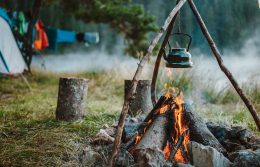A Top Chef’s Guide to Kitchen Safety
As more and more amateur cooks are embracing their inner Top Chef, it’s more vital than ever to keep in mind that cooking can be a dangerous business.
In any other setting, open flames, sharp objects, and potential disease cultures lurking around every corner would be considered a hazard zone. But in the kitchen, it’s just, well, the kitchen.
A Professional’s Advice
John Tesar, a Dallas-based chef and restaurateur of the award-winning Spoon Bar & Kitchen (and who was actually a contestant on Bravo’s Top Chef) has some tips for keeping your home kitchen safe.
“Entertaining and cooking at home can be so much fun. However any time there is fire, high temperatures, and grease or fat (i.e. butter and oils) involved, there is always the chance of danger,” Tesar says. “You need to manage the moment and know how to extinguish the flames to protect your home and your kitchen.”
9 Safety Steps
- 1. Turn off your smoke alarm before sautéing. This will prevent unnecessary panic if it goes off.
- 2. Always keep a fire extinguisher on hand. Under the sink is a good spot.
- 3. Use bleach. Avoid salmonella concerns by using bleach to wipe down areas that have touched raw fish or poultry.
- 4. Never try to put out a kitchen fire with water. Salt or milk work best to extinguish grease fires.
- 5. Choose the right knife for the job. It’s always safest to use a knife that’s sharp enough for the task.
- 6. Never leave knives in soapy or cloudy water. Someone may put their hand into the water unawares and risk getting cut.
- 7. Point pot handles toward the back of the stove. This will help you avoid picking the pot up without thinking.
- 8. Stir away from the body. You’ll avoid splashing yourself.
- 9. Store heavy items on lower shelves. Keep lighter items on high shelves.
Happy cooking! Find some recipe inspiration here.
© 2013 Texas Farm Bureau Insurance



